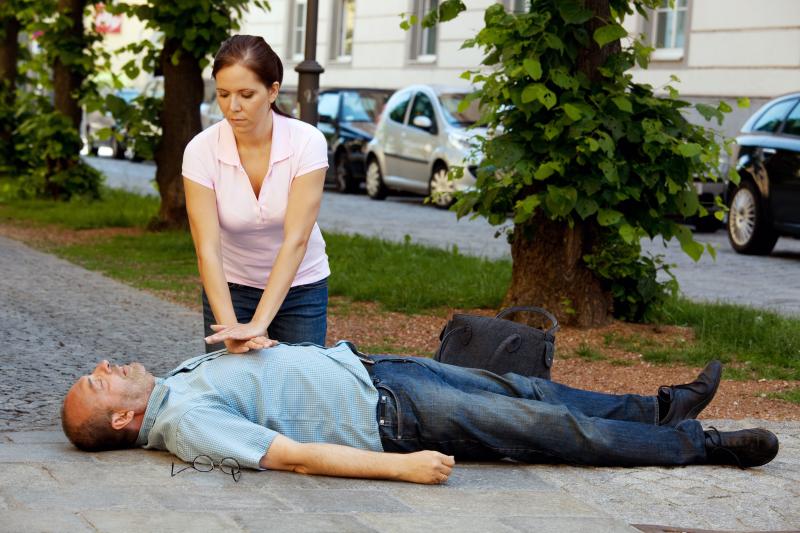
A community-based intervention—which involves building a network of trained community responders, providing dispatcher-assisted cardiopulmonary resuscitation (CPR), and real-time monitoring of out-of-hospital cardiac arrest (OHCA) cases via a mobile application—succeeds in enhancing community first response to OHCA, improving survival rates in areas where it was implemented, as shown in a Singapore study.
“In Singapore, OHCA occurring within residential areas (residential OHCA) accounts for 70 percent of cardiac arrest cases and is associated with poorer survival outcomes as compared to OHCA occurring in public areas (nonresidential OHCA),” according to the investigators.
“Each minute of delay in initiating resuscitation contributes to a 7–10 percent decreased probability of survival, highlighting the time-sensitive nature of OHCA and the importance of early defibrillation and early resuscitation among others in the chain of survival,” they added.
The investigators evaluated a recently launched interventional bundle consisting of various community-based programmes aimed at improving survival in OHCA. They included 1,241 OHCA cases reported from six selected regions locally (Tampines, Pasir Ris, Radin Mas, Choa Chu Kang, Bukit Panjang and Bedok). Of these, 361 occurred after the implementation of the interventional bundle (intervention) while the remaining 880 occurred prior (control).
Compared with controls, patients in the intervention group were older (mean age, 70 vs 67 years) and had higher rates of survival (3.3 percent vs 2.2 percent), prehospital return of spontaneous circulation (ROSC; 9.1 percent vs 5.1 percent), bystander CPR (63.7 percent vs 44.8 percent) and bystander automated external defibrillator (AED) application (2.8 percent vs 1.1 percent). [Resuscitation 2019;doi:10.1016/j.resuscitation.2019.10.015]
On multivariable logistic regression, the intervention bundle conferred benefits for increasing survival (odds ratio [OR], 2.39, 95 percent confidence interval [CI], 1.02–5.62), prehospital ROSC (OR, 1.94, 95 percent CI, 1.15–3.25) and bystander CPR rate (OR, 2.29, 95 percent CI, 1.77–2.96).
The intervention-led improvements in OHCA survival demonstrated “the importance of employing a systems-level approach in targeting public health issues such as this,” the investigators said.
Reducing barriers to bystander CPR
The key component of the bundle is the Save-A-Life (SAL) initiative, which consists of free CPR/AED training sessions for residents coupled with AED installation at public housing blocks. According to data from Singapore’s national OHCA Registry, a total of 360 AEDs were installed at public housing blocks, and 30,000 individuals underwent CPR/AED training under SAL.
A mobile phone geolocation application that provides real-time alerts about OHCA cases, ‘myResponder’ is the second component. This app alerts users of a potential cardiac arrest occurring within 400 m of their location and locates the nearest available public access AED, facilitating early CPR and early defibrillation.
The final component to the interventional bundle is the dispatcher-assisted CPR (DA-CPR) programme, which provides over-the-phone CPR instructions by an EMS dispatcher. Like the SAL initiative, DA-CPR is aimed at reducing barriers to bystander CPR.
According to the investigators, the key takeaway from the present study is that the SAL initiative is feasible and effective as a community-based intervention. "Further evaluation is planned.”